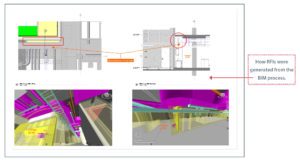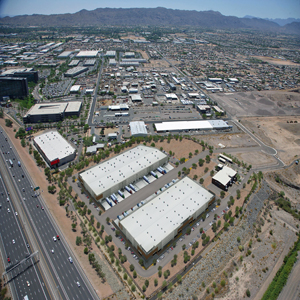 In the building world, we are constantly solving puzzles, some more complicated than others. hardison/downey construction’s recent completion of the 65,000-square-foot YAM Worldwide Center was just that: one big puzzle. But fortunately Kitchell’s ability to mobilize and engage its in-house services helped solve it.
In the building world, we are constantly solving puzzles, some more complicated than others. hardison/downey construction’s recent completion of the 65,000-square-foot YAM Worldwide Center was just that: one big puzzle. But fortunately Kitchell’s ability to mobilize and engage its in-house services helped solve it.
As the new home of BIG YAM Ad Agency, Sneaky Big Studios and several other YAM Holdings affiliates, each of the projects under this roof had its own consultant team and set of documents. h/dc held a total of four separate general contracts between the shell building, with two levels of underground parking and three major complicated tenant improvements (TIs). In August 2015, the post-tension concrete shell structure was already under construction and the h/dc team was challenged to implement a total coordination and document management strategy, since all three separate TI jobs (with three separate design and engineering teams) were combined under one permit.
Early on, says h/dc Senior Project Manager Eric Rogers, the team realized the coordination effort between four design and engineering teams was challenging: enter Kitchell’s in-house Virtual Construction (ViCon) team.
“Having the in-house tools to be able to manage a complex project like this was a great illustration of our services all working collaboratively,” Rogers said.
A digital scan of the building structure was overlaid into a BIM model, which had already eliminated conflicts. This brought even more issues and conflicts to resolution before they became costly delays, by bridging the gap between drawings/models and reality. Kitchell’s IT team was integral to the project, as SharePoint also played a major role in the simple management and coordination of information flow to the design teams and a long list of owner vendors.
As the project moved into construction, Bluebeam Studio became a very reliable and useful tool. A station was completely dedicated to the electronic management of the document set on-site, complete with a touch screen monitor. The document set was uploaded to a Bluebeam Studio session, so the project team could have access to the documents on both their desktops and iPads. In the studio session, drawings could be checked out and updated by anyone with access. The superintendents were able to post pictures of field conditions to the drawings.
“As you can imagine, with this many designers and engineers all crossing paths in a single document set, tracking and coordination of changes was really important,” Rogers said.
By using a hyperlink function, the team was able to highlight the areas on a drawing that was revised and linked back to the document that made the revision. This saved the field personnel time by being able to reference the drawings and revisions without having to carry around a set of paper drawings or return to the trailers.
The need for real-time access to this information was critical. The team used iPads in the field for quick reference and access to the latest information and any relevant revisions being tracked in the electronic set. When a larger screen was needed, the site team and subcontractors used the document station to review the plans, enlarge details and generate further questions and clarifications on the fly. This kept decision-making moving along, and allowed for a marked-up screen shot to be attached to an RFI for response in real time. This constant communication flow reduced response time to the field for implementation.
When the time came for punch lists, the team again turned to Bluebeam Studio.
“A little time spent on establishing the punch document set and they were off,” Rogers said. “Bluebeam allows photos taken with your iPad to be tagged to the punch item on the plan. In most cases, this greatly reduced the ‘wandering’ for a subcontractor to find and correct the punch item.”
At the end of the project the team was able to include the fully posted set of electronic documents as part of the closeout manuals turned over to ownership.
Puzzle solved: while building value for project owners, teams and each other.

